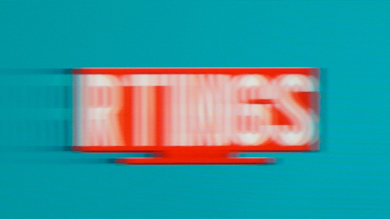Here's some excellent motion blur photography utilizing an invention of my own (frequently found in science labs, rarely found on reviewer/blog websites). The pursuit camera invention costs as little as $200 to setup -- just a camera rail & an off-the-shelf camera -- or the only-slightly-more-costly setup photographed below. This is the world's most inexpensive accurate pursuit camera for motion blur measurement, made possible by a pursuit-camera tracking-accuracy-verification temporal test pattern I invented.
The RTings HDTV testing website has adopted my invention (which I gave to them for free, in exchange for credit).
Stationary cameras don't accurately capture display motion blur during eye-tracking situations. Thus, pursuit camera tracking of on-screen motion is a vastly far more accurate approximation of eye-tracking of on-screen motion. It makes possible a greater degree of objective comparative display motion blur analysis than stationary camera photography of displays.
RTings' test method, based on my setup, is quite simple. Rather than a UFO (which Blur Busters uses in motion tests), they use an RTings logo graphic scrolling left-to-right at 960 pixels/second (moderately fast motion). The motion itself creates motion blur, which is thus accurately captured by pursuit camera (camera-tracking as an approximate equivalence of eye-tracking). Scientific papers (example: "MPRT pursuit camera" on Google Scholar) have long used the pursuit camera technique scientific measurement of motion blur. However, pursuit cameras were not cheap enough for websites/bloggers to use until a simple invention permitted easy verification of tracking accuracy via a temporal test pattern.
Obviously, as you can see there's the LCD GtG pixel transition slowness showing up in the images (the GtG effects is the ghosting / multi-image effect occuring at the left edge behind the motion blurring) that's occuring independently of the persistence-based motion blurring. GtG artifacts is not the same as persistence-based motion blurring. It is already quite obvious, that the persistence-based motion blur out-dominates GtG-based artifacts, at least during the 960 pixels/second motionspeed (representative of fast motion, like sports and videogames) on this display.
As you can see enabling blur-reducing mode, often sharpens the GtG artifacts too, but the persistence-related motion blur becomes gone or mostly gone. So as you can see, that persistence blur is independent of GtG artifacts, and sometimes the GtG artifacts is hidden (blurred) by the persistence blur, as seen in the above photos.
The motion blur seen in these captures, is pretty accurately representative of blurring seen in low-blur source material of similar crispness at similar motionspeeds running at framerates matching refreshrates (e.g. fast-camera-shutter sports broadcasts, or playing 60fps video games, or computer use such as 60fps text smooth-scrolling, etc). These motionspeeds are far faster than the typical 6.5ppf used in FPD monoscope and similar tests, so motion blur issues stands out far more, which is important to motion clarity lovers (e.g. CRT, fast plasma, etc), much as video is to videophiles and audio is to audiophiles.
A group of researchers are now about to work on a scientific paper within a year -- writing about my pursuit camera technique (yep -- peer reviewed), so this will be the first real science paper I'm mentioned in, as they were very impressed at what I have done -- my pursuit camera setup cost only $200 to build from scratch -- and outperformed a $50,000 commercial rig.
Related reading:
- Google Scholar "MPRT pursuit camera"
-- pursuit cameras precent for scientific display motion measurement - RTings Motion Blur TV Photogrpahy
-- photography of motion blur; and scroll down to see credit for my invention - Blur Busters announcement of RTings using my invention
-- a few weeks ago - BlurBusters.com: Instructions on Temporal Test Pattern
-- scroll several pages down to see how the temporal test pattern is used as tracking accuracy verification - TestUFO.com: Temporal Test Pattern Example #1 - Ghosting
-- look at the black strips with the temporal test pattern, looks accurate only during correct tracking. This is the tracking-accuracy-verification temporal test pattern that I gave RTings permission to use. - TestUFO.com: Temporal Test Pattern Example #2 - Moving Photo
-- look at the temporal grid overlay that only looks accurate during correct tracking




